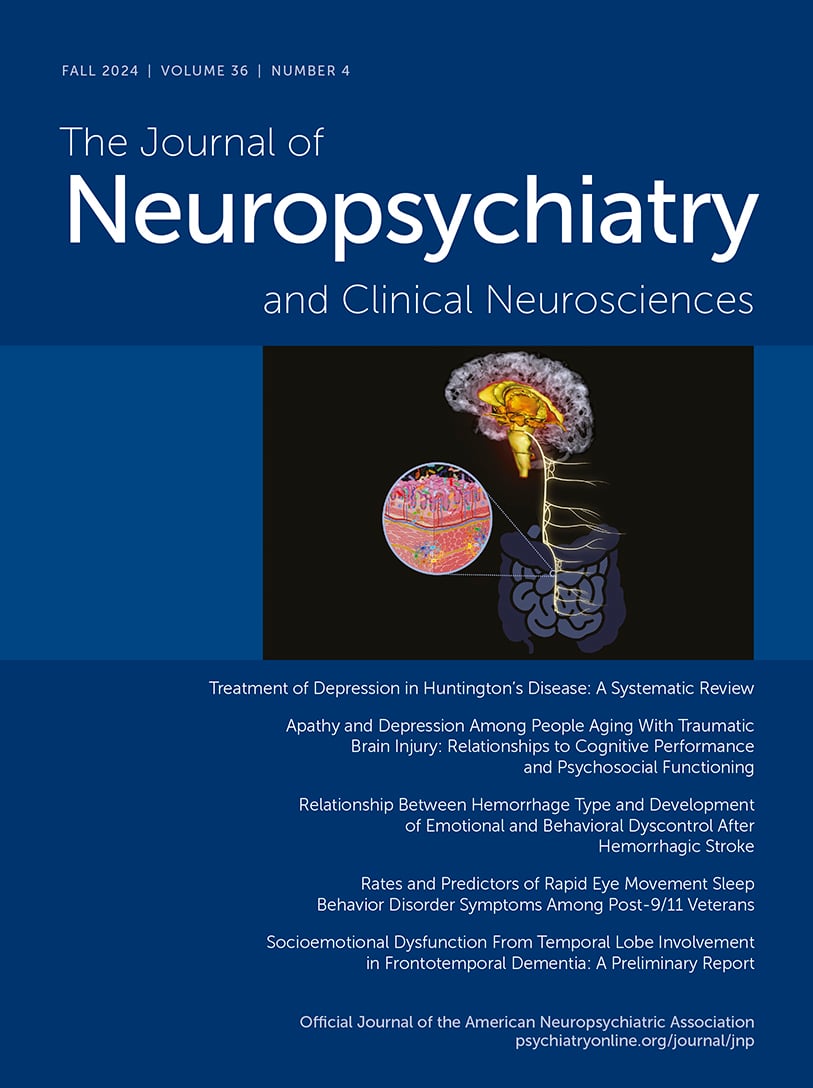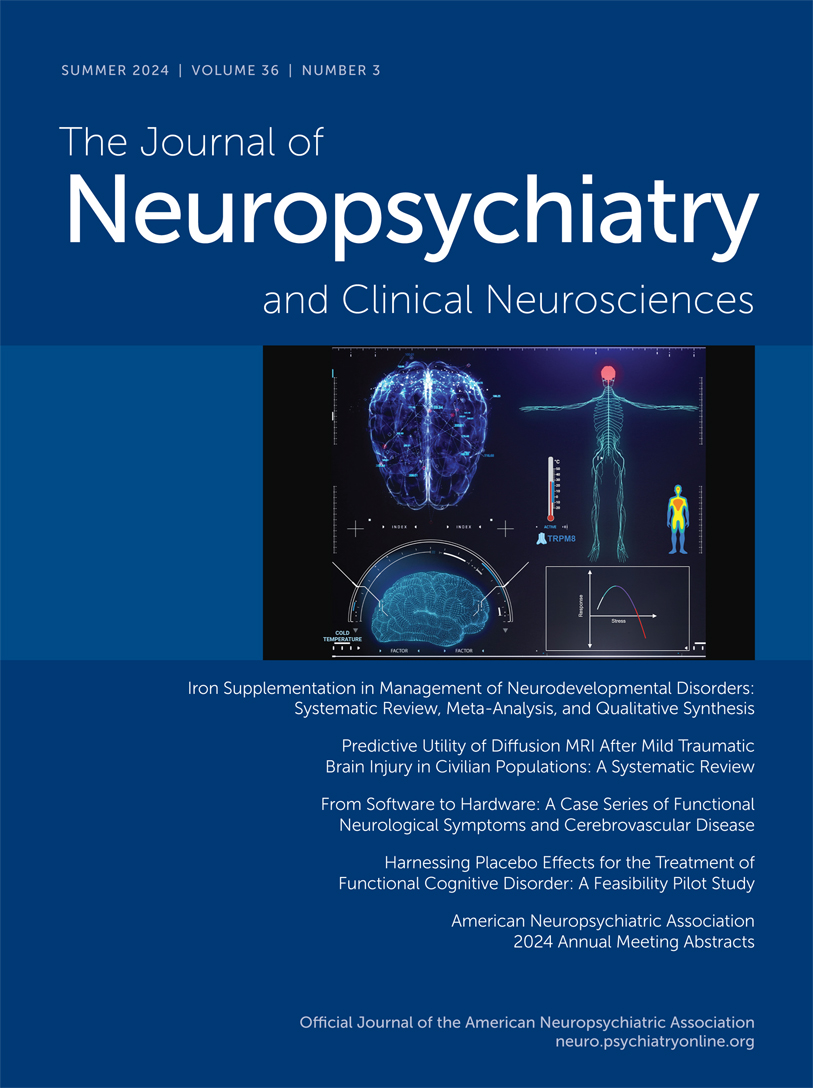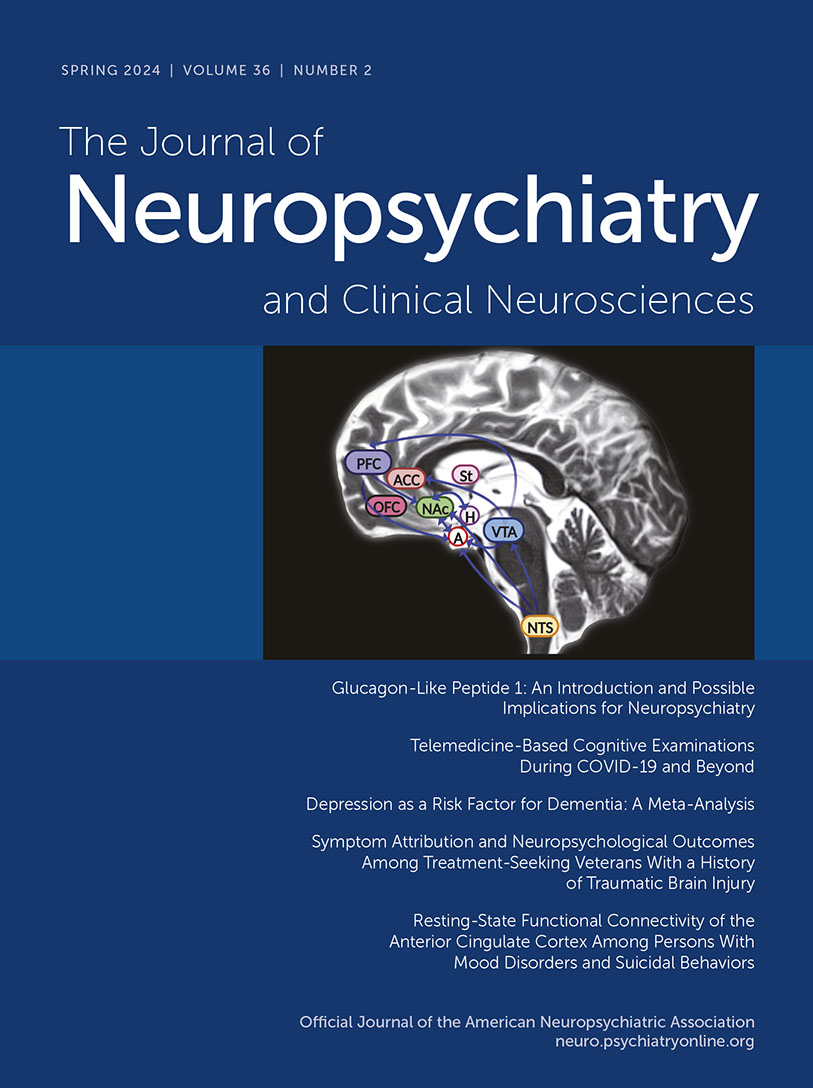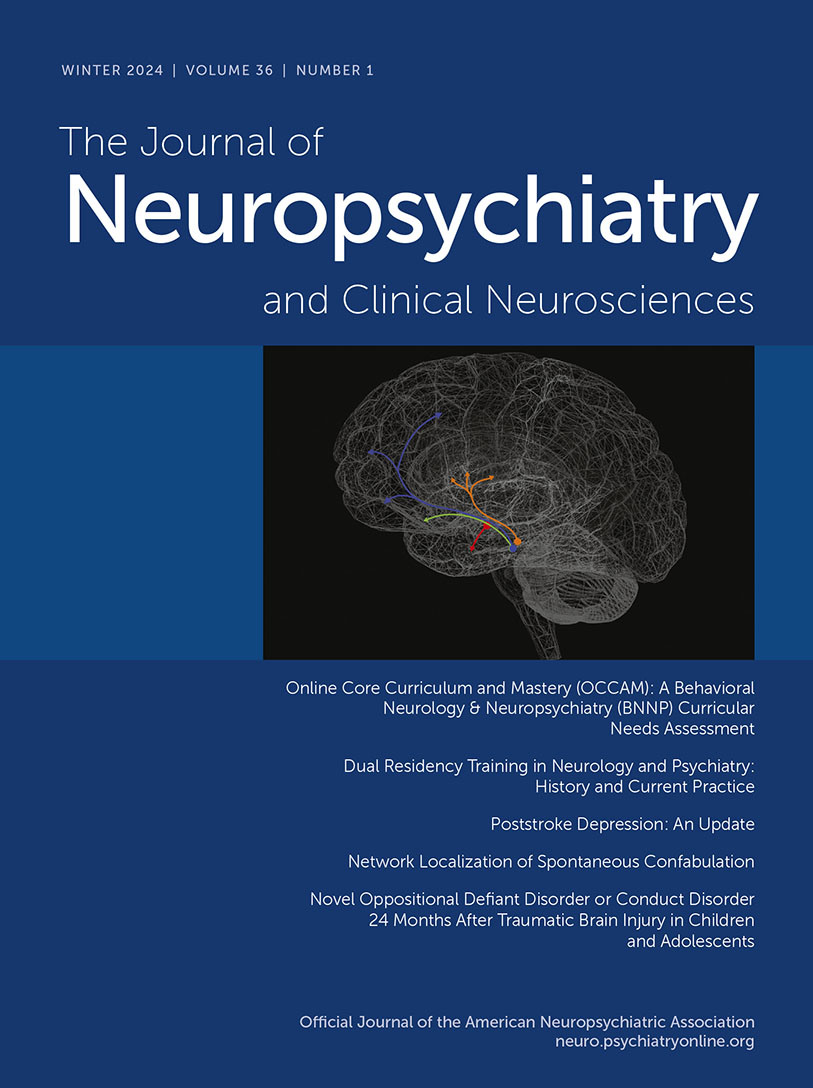The Journal of Neuropsychiatry and Clinical Neurosciences
- Volume 1
- Number 4
- November 1989
Publication date: 01 November 1989
Pages347–361Evaluating the clinical significance of cognitive dysfunction in patients who exhibit signs of both depression and dementia is one of the more formidable challenges in psychiatry. This article reviews cognitive dysfunction associated with depression, the ...
https://doi.org/10.1176/jnp.1.4.347Publication date: 01 November 1989
Pages366–371The authors report a study of electroencephalographic (EEG) sleep predictors of two-year mortality in 26 elderly patients with mixed symptoms of depression and cognitive impairment. Patients who had died by two-year follow-up were characterized by ...
https://doi.org/10.1176/jnp.1.4.366Publication date: 01 November 1989
Pages372–376Sleep electroencephalograms (EEGs) of subjects with primary panic disorder were compared to those of normal controls matched for age and sex. Significant differences were found between patients and controls in sleep latency, sleep efficiency, and stage 2 ...
https://doi.org/10.1176/jnp.1.4.372Publication date: 01 November 1989
Pages377–384A double-blind, placebo-controlled crossover study of the effects of apomorphine on regional cerebral blood flow (rCBF) during a prefrontal cortex activation task was undertaken to explore the role of dopamine on cortical function. The subjects were eight ...
https://doi.org/10.1176/jnp.1.4.377Publication date: 01 November 1989
Pages385–390The authors present two cases of schizophrenia in young males who have malformations of the septum pellucidum, a thin sheet of cells and fibers located in the midline of the brain that separates the lateral ventricles. These cases are discussed in the ...
https://doi.org/10.1176/jnp.1.4.385Publication date: 01 November 1989
Pages391–393This study attempted to identify microscopic correlates to the structural abnormalities reported in the corpus callosum of schizophrenic patients. Sections of the genu, body, and splenium of the corpus callosum were taken from formalin-fixed brains of ...
https://doi.org/10.1176/jnp.1.4.391Publication date: 01 November 1989
Pages394–397Schizophrenic patients in long-term care programs may not have been carefully diagnosed according to current criteria. As part of a clinical reassessment program at a state hospital, the author randomly assessed 72 patients who carried a diagnosis of ...
https://doi.org/10.1176/jnp.1.4.394Publication date: 01 November 1989
Pages398–400A retrospective review of the records of 755 patients seen by a psychiatric consultation-liaison service in a general hospital was performed. The authors found that 87% of manic patients and 38% of depressed patients had a diagnosis of organic mood ...
https://doi.org/10.1176/jnp.1.4.398Publication date: 01 November 1989
Pages400–404A patient with progressive supranuclear palsy demonstrated a region- specific decrease in T2 signal during high-field-strength brain magnetic resonance imaging. At autopsy the T2-signal hypointensity was found to correspond topographically to increased ...
https://doi.org/10.1176/jnp.1.4.400Publication date: 01 November 1989
Pages404–408Thirty consecutive lactate-sensitive panic disorder patients were studied with magnetic resonance imaging (MRI) to investigate the relationship between temporal lobe abnormalities and panic disorder. Neuroanatomical abnormalities, most involving the right ...
https://doi.org/10.1176/jnp.1.4.404Publication date: 01 November 1989
Pages408–412Soon after treatment of a right basotemporal vascular malformation using an embolization procedure, a 25-year-old patient developed an acute episode of mania. Two months later the patient was still manic, and a second embolization was scheduled. Before it ...
https://doi.org/10.1176/jnp.1.4.408Publication date: 01 November 1989
Pages418–425Minor episodes of aggressive behavior are relatively common in some populations of patients with epilepsy. However, they are probably no more common than in populations who are socially disadvantaged or who have brain damage. The confusion that commonly ...
https://doi.org/10.1176/jnp.1.4.418Article
Article
Article
Past Issues
View Issues Archive
Vol. 36 | No. 4

Vol. 36 | No. 3

Vol. 36 | No. 2
